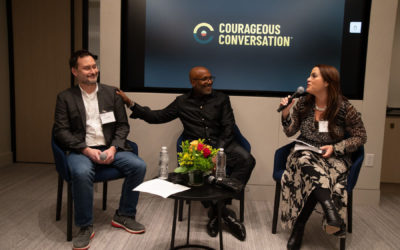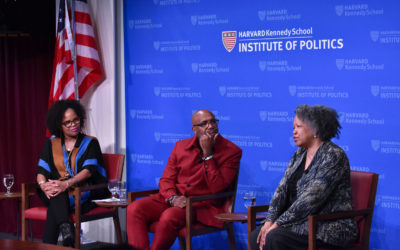By Janet Edwards—July 5, 2023
Talking about racism in interracial groups is difficult and uncomfortable and people sometimes go to great lengths to avoid the topic. But having such conversations is the only way to create more equitable, diverse, and inclusive spaces, says Glenn Singleton, founder and CEO of Courageous Conversation, a consulting and training agency that works with education, government, and business organizations.
Discussing race presents both challenges and opportunities, he says, and no matter the setting, the same issue arises: We don’t focus enough on our individual experiences, even though doing so would help us understand how they inform our actions.
“Each person comes into their environments — from students to teachers, and the professors, administrators, and community activists — with a personal narrative around race that needs to be at the foundation of their understanding of how their beliefs drive their behaviors,” Singleton says.
Part of the role of colleges and universities is to advance dialogue on difficult topics, and a useful starting point for conversations about race is to actively commit to that responsibility, says Ruby Ababio-Fernandez, EdD, executive vice president of programming and development for Courageous Conversation.
“It has always been a taboo to have a conversation about race in the U.S.,” she says. “The first thing [to do is] take off the brakes and make it clear that our intention is to have this conversation.”
The word “courageous” is a core tenet of the framework on talking about racial equity for good reasons — because such conversations precede courageous leadership, says Ababio-Fernandez.
“If you can talk about it, you can critically examine it,” she says. “If you can’t critically examine it, you don’t deeply understand it. And if you don’t understand it, you can’t address it.”
Singleton and his team provide parameters that help manage the discomfort that invariably arises and offer ways to help participants process their emotions. As part of that, facilitators elicit agreements at the outset that establish a safe space for faculty and staff to discuss the goal the group is hoping to achieve, he says, whether it is to create more equitable practices, provide a more culturally responsive classroom experience, or some other aspiration.
These buy-ins also involve a commitment to stay engaged, regardless of the intensity, and to be honest about one’s thoughts and feelings no matter how unusual or unpopular they fear those views might be.
As part of the process, group members must also accept a lack of closure, understanding that discussions about race are ongoing.
Before discussions get underway in a group setting, Singleton and his team teach mindful interaction and active listening techniques, key elements in advancing difficult conversations.
Read more at Insight Into Diversity.




